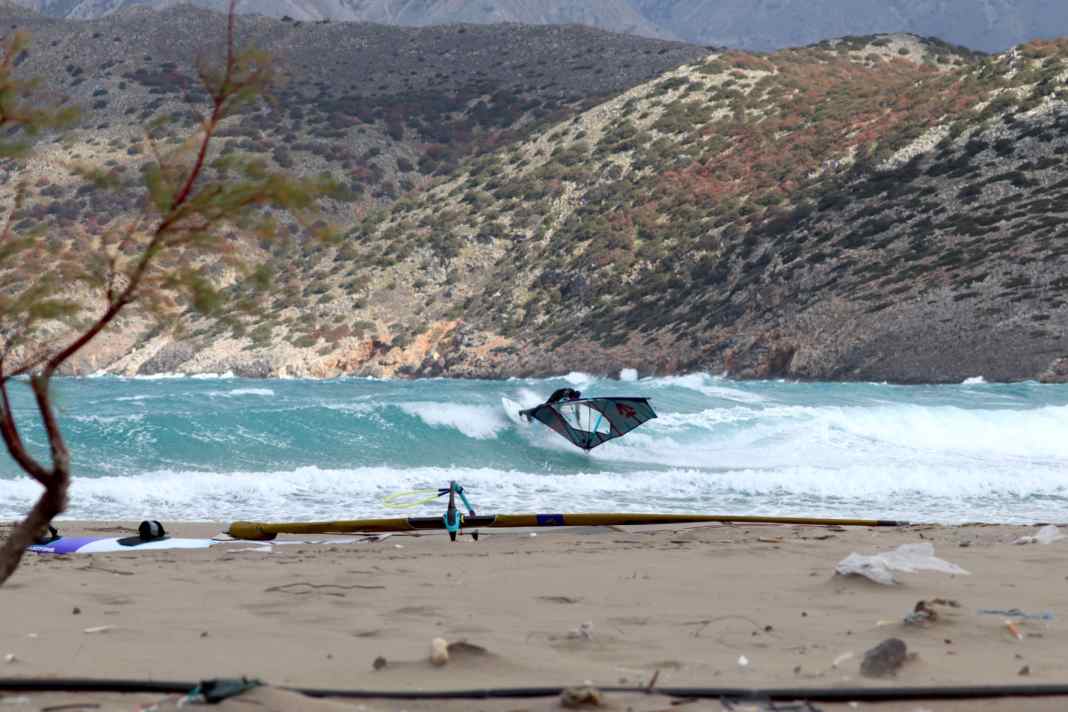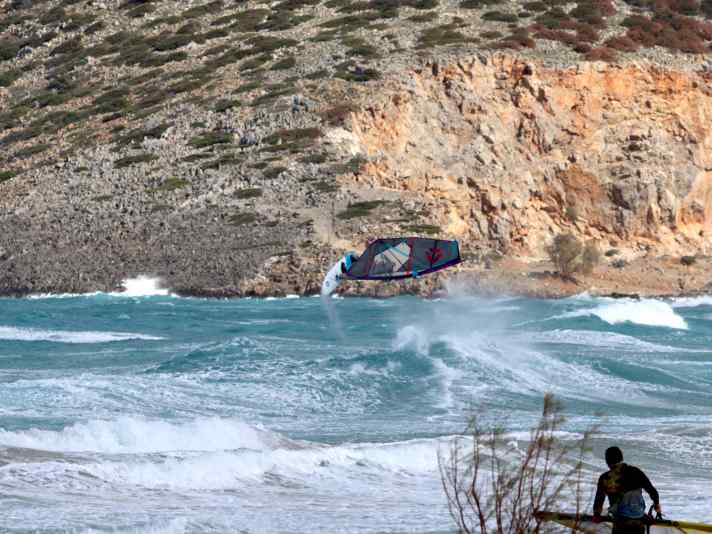





Greece is best known for its sunny summers and consistent Meltemi winds - but few realise that the winter months can also bring stormy weather and impressive waves. All you need is a little motivation to head south, and Crete will more than reward you.
Crete - more than just a summer holiday destination
Crete, the largest Greek island, stretches over 260 kilometres and lies on the southernmost edge of Greece. With its mild winter climate - the thermometer rarely drops below 10°C on the coldest days and average temperatures are around 17°C - the island offers ideal conditions for windsurfers looking for a winter home within a few hours' flight or by van. While Crete is widely recognised for its stunning landscapes, rich culinary offerings and distinctive summer winds, especially in the east of the island, the island transforms in winter, revealing a wilder, untamed surfing paradise.
Waves in Greece? Definitely!
Crete is best known for Kouremenos Beach on the east coast - a hotspot for windsurfers with guaranteed winds in summer. But the real attraction of Crete goes far beyond these constant conditions. We felt and enjoyed it once again - here are some tips for anyone thinking of visiting Crete in winter:

Winter surf spots on Crete
Crete is huge and there are various spots along the coast. Both the east and the west are interesting during winter storms in the north:
Crete-West
The western part of Crete is home to some of the best winter waves on the island. Spots like Falasarna and Paleochora offer consistent waves when south winds are blowing. On days with strong west-north-west winds, these spots offer side-offshore conditions with beautiful, glassy waves - ideal for surfers who want to draw their lines in clean waves.
Crete-East
Kouremenos beach: This beach is known for its shallow water conditions in summer. From May to October, this spot in eastern Crete offers some of the best wind conditions in Europe. On site offersGone Surfing Crete The spot is equipped with the latest Duotone windsurfing and wingfoiling equipment and is one of the largest wingfoil stations in the world. With winter northerly winds of over 30 knots, this spot can also produce impressive waves. With its long sandy beach and rock-free access, it remains one of the safest and most accessible spots in the region.
Pachia Ammos: Located between Agios Nikolaos and Sitia, this spot is a great option when the weather forecast is good but not quite epic. With a northerly wind, it offers fantastic onshore jumping conditions. During our trip we had two unforgettable sessions here, using 4.0 rigs and pushing each other to jump higher and higher. The sandy beach makes it easy to get in, but the municipality has put up concrete blocks to protect the coastline, which should be taken into account when riding off.
Faneromeni: One of the most famous wave spots in Greece, just 15 kilometres west of Sitia. This spot is famous for its heavy, glassy waves and first-class conditions in big swells. But beware: Faneromeni is not for the faint-hearted. With a rocky reef and a difficult beach exit, it is one of the most challenging but also most rewarding spots on the island. On big days, you can watch the waves explode in spectacular fashion from the viewpoint (small kappele).

If you want to surf here, you should be really fit, have some spare equipment with you and even we would recommend shoes - at the latest when you stand on the reef for the first time, you'll be happy that you might be able to save your equipment after all. Nevertheless, Faneromeni takes its toll on masts and fins! During our visit, Chris Sammer enjoyed a solo session here - as Christos fell victim to the shorebreak, experience is crucial here.
General information
Finally, a few general travel tips for a winter trip to Crete:
Arrival
Crete is easily accessible via flights to Heraklion and Chania as well as ferry connections from Athens if you are travelling by van. Car hire is affordable in the low season, so you can easily explore the island and find the best spots.
Where to stay overnight?
In north wind conditions, a base in Agios Nikolaos or Sitia offers easy access to the eastern surf spots and a wide choice of accommodation, restaurants and tavernas. If the forecast points to west-south-west winds, it is advisable to head west to Chania or Rethymnon and base yourself there.

